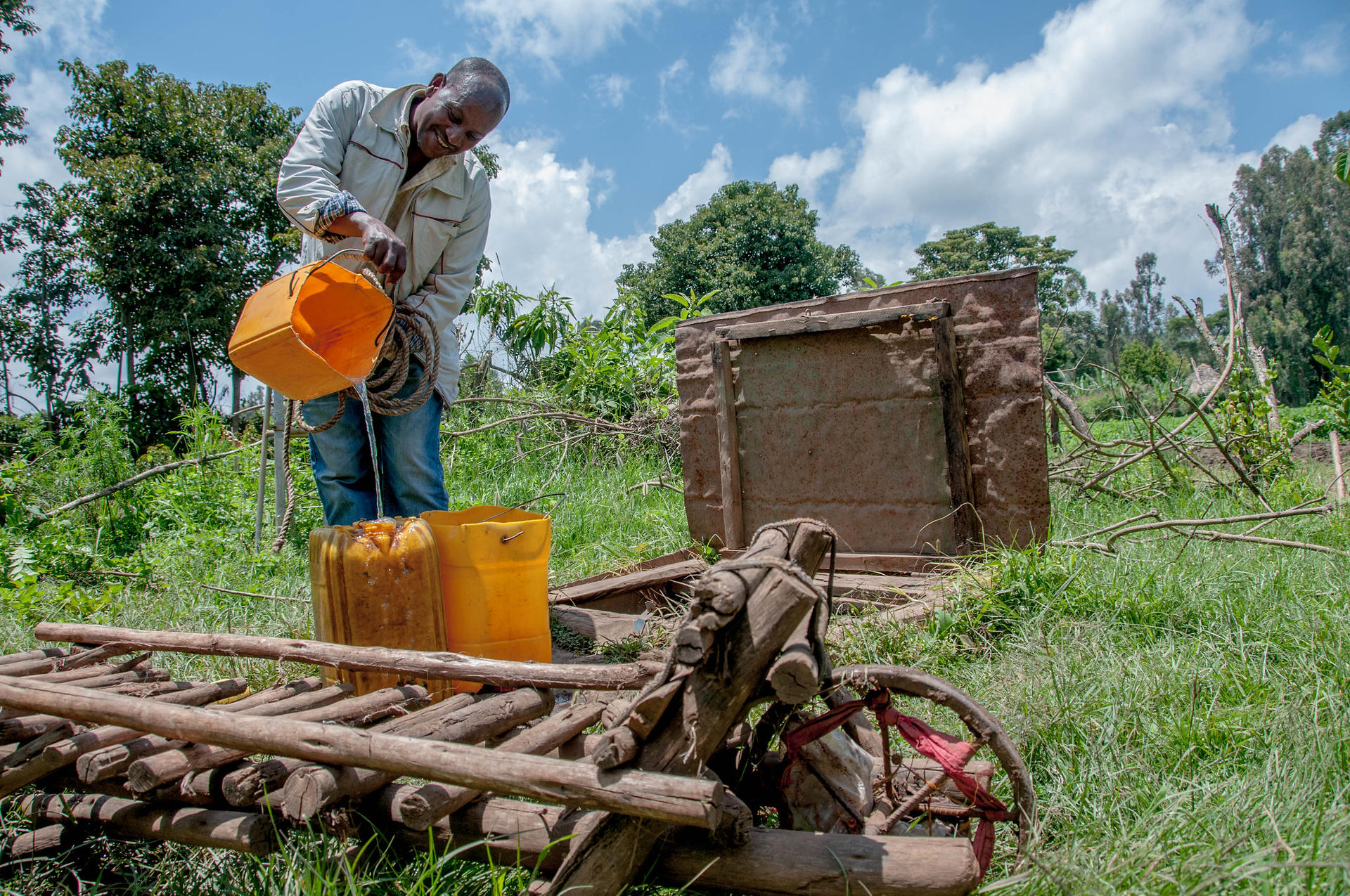Blog Back to the land: Research helps farmers sequester soil carbon

Hydrologist Wuletawu Abera grew up in a small-scale farming family in Ethiopia, now he's uncovered findings that could help farmers sequester more carbon in the soil by applying different land management strategies.
By: Andrew Wight
Organic matter in the earth’s soils store more than twice the carbon than atmospheric CO2, so figuring out the carbon sequestration potential of different landscapes and agricultural practices is key in reaching national and global climate goals.
“Generally, when people think about carbon sequestration, they think about just planting trees on the surface, but really if we can quantify how much the soil can help in sequestering, then we can develop effective soil management strategies and our carbon sequestration targets,” Abera said.
Abera’s team at the Alliance of Bioversity International and CIAT and their collaborators have shown that vegetation cover, combined with earthworks like retaining walls or trenches, can help increase the amount of carbon stored in the soil.

A farmer draws water from a well in Hosana, Ethiopia. Credit: Georgina Smith
These findings came from three studies, the first looking at the historical carbon sequestration of different land uses in the Ethiopian highlands, another looking at the impact of different ways of managing land, particularly in agricultural or degraded landscapes, and a third that develops future scenarios based on modelling.
The Ethiopian highlands, a large, mountainous region of East Africa, have seen substantial land degradation in recent decades, because once tree cover is replaced by agricultural land, the steep slopes and high rainfall lead to erosion and loss of soil organic matter. So, Abera says, it is critical to provide hard evidence of how land use change impacts the amount of carbon locked up in the soil.
In a paper published last year in the journal Agriculture, Ecosystems & Environment, Abera and his team showed the results of 241 topsoil samples, looking at data stretching back over 80 years to provide a historical perspective.
They found that soil taken from undisturbed vegetation and protected guasa grasslands contain the highest stored soil carbon.
“The dominant values are the soil properties like clay and soil PH and vegetation cover,” Abera said. “As well as being a carbon sink itself, vegetation has many functions, including ground cover, preventing erosion and promoting the growth of microorganisms.”
In the paper published in the May 2021 edition of the Journal of Environmental Management, Abera and a different set of co-authors focused on what land management practices and landscapes produced the best outcomes for the retention of soil carbon.
Abera said the combination of vegetation cover and building physical structures like trenches and retaining walls showed the best results in increasing the amount of organic carbon stored in the soil.
"The higher the soil carbon, the better the retention of water and nutrients, making for better soils for agriculture," Abera said, adding that the biggest benefits were found in lightly or moderately disturbed areas.
Both studies looked at parts of the highlands where a national land management campaign has been underway. The researchers have collaborated with the Ethiopian Ministry of Agriculture, so the hope is that this hard evidence can be used to support the rollout of land management techniques across the country's 135 major watersheds by the sustainable land management program of the Ministry of Agriculture.
“Our findings confirm that we can practice good land management: we have evidence that can guide government actions and ultimately sequester more carbon,” Abera said, adding that he hoped these lessons could lead to similar efforts in other countries.
The third study, released in July 2021, in the journal Environment, Development and Sustainability, focused on modelling and mapping soil carbon sequestration from give different improved land management practices.
Abera notes how his background has informed the research. “I'm from the countryside and my family are farmers,” he says. “So as a boy I used to support my father when he was farming.”
While not all farmers are aware of the mechanics of carbon sequestration, Abera says that they understand the practical benefits of the land management practices. Even if these practices don’t always lead to increased agricultural yields in the short-term.
Abera, who has a Ph.D. in hydrology and initially focused on water management and irrigation, says the carbon work is particularly fulfilling.
“It makes me happy, it connects me to my roots and produces the evidence needed to help on a global scale.”
Read the articles here
- Soil organic carbon dynamics along chrono-sequence land-use systems in the highlands of Ethiopia
- Estimating spatially distributed SOC sequestration potentials of sustainable land management practices in Ethiopia
- Modeling long-term attainable soil organic carbon sequestration across the highlands of Ethiopia
